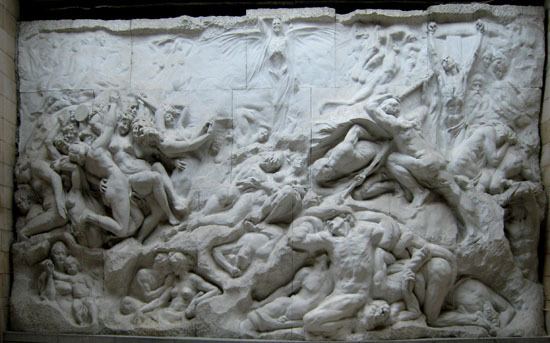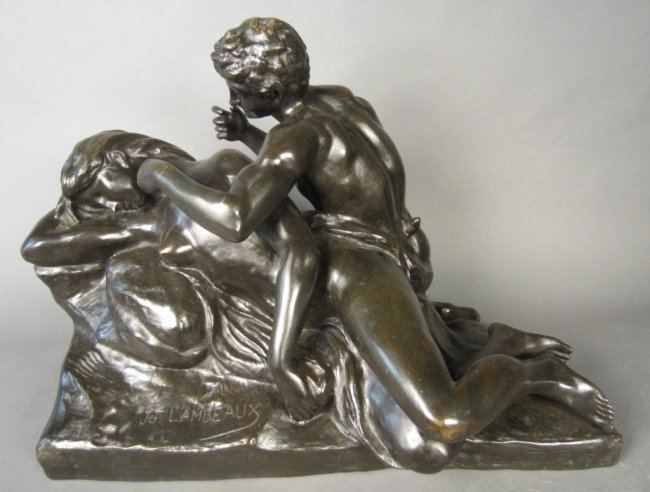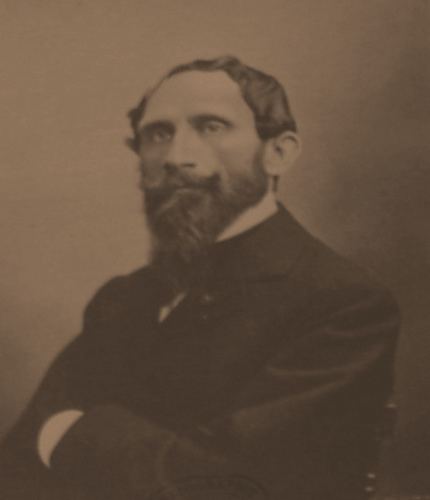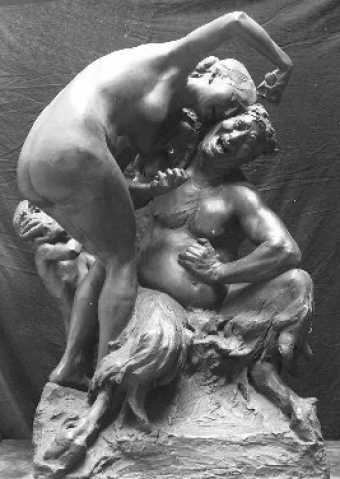Full Name Joseph Lambeaux Role Artist Name Jef Lambeaux | Patron(s) Jean Geefs Nationality Belgian | |
 | ||
Education Royal Academy of Fine Arts Artwork Worstelaars, Kinderen, De kus | ||
Les passions humaines de jef lambeaux
Jef Lambeaux or Josef Lambeaux (14 January 1852 – 5 June 1908) was a Belgian sculptor who worked during the late 19th century and early 20th century. His best known work is Temple of Human Passions, a colossal marble bas-relief.
Contents
- Les passions humaines de jef lambeaux
- An ART 220 Film Le Forgeron by Jef Lambeaux
- Early life and education
- Career
- Temple of Human Passions
- Death
- Honnours
- Jef Lambeaux Museum
- References

An ART 220 Film: Le Forgeron by Jef Lambeaux
Early life and education

Lambeaux was born in Antwerp, Belgium, on 14 January 1852. He studied at the Antwerp Academy of Fine Arts, and was a pupil of Jean Geefs. He was part of a group of young artists, the "Van Beers clique", led by Jan van Beers. This group included the artists Piet Verhaert (1852–1908) and Alexander Struys (1852–1941). They were well known for their mischievous and eccentric behaviour, including walking around Antwerp dressed in historic costumes.
Career
His first work, War, was exhibited in 1871, and was followed by a long series of humorous groups, including Children Dancing, Say Good Morning, The Lucky Number and; An Accident (1875). He then went to Paris, where he executed The Beggar and The Blini Pauper for the Belgian salons, and produced The Kiss (1881), generally regarded as his masterpiece. Claire J. R. Colinet – who would have great success during her career in the Art Deco era – was one of Lambeaux's students during his time in Paris. After visiting Italy, where he was much impressed by the works of Jean Boulogne, he showed a strong predilection for effects of force and motion.

Other notable works include his Brabo fountain in Antwerp (1886), Robbing the Eagles Eyrie (1890), Drunkenness (1893), The Triumph of Woman, The Bitten Faun (which created a great stir at the Exposition Universelle at Liege in 1905), and The Human Passions, a colossal marble bas-relief, elaborated from a sketch exhibited in 1889. Of his numerous busts may be mentioned those of Hendrik Conscience, and of Charles Buls, the burgomaster of Brussels.
Temple of Human Passions

Lambeaux didn't escape the wrath of art critics when he showed a life-size model of Temple of Human Passions at the Salon Triennial in Ghent in 1889. The sculpture managed to attract such fury and uproar that in 1890 the journal L’Art Moderne described the work as follows:
[It is] a pile of naked and contorted bodies, muscled wrestlers in delirium, an absolute and incomparable childish concept. It is at once chaotic and vague, bloated and pretentious, pompous and empty. And what if, instead of paying for 300,000 francs of “passions”, the government simply bought works of art?
Death
Lambeaux died on 5 June 1908 in Brussels.
Honnours
Jef Lambeaux Museum
In 2006 the association "ASBL Musée Jef Lambeaux" was set up to promote the creation of a museum dedicated to the artist in Saint-Gilles, Belgium. The museum was already promised by the municipality of Saint-Gilles in 1898 but never built.
